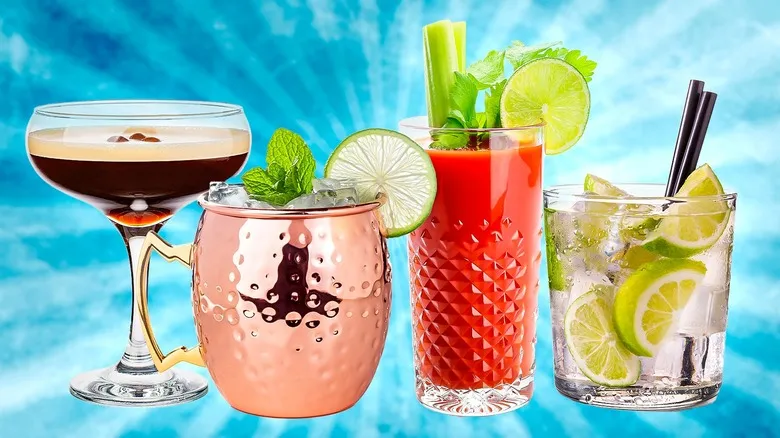Moscow Mule
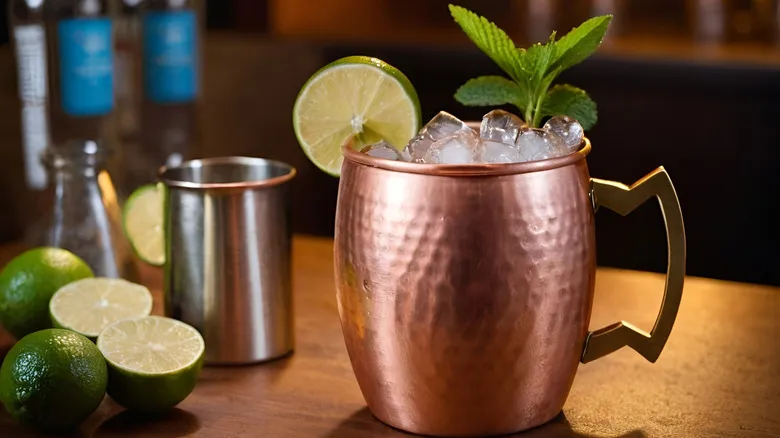
This drink is a no-brainer, thanks to its stylish presentation in a distinctive copper mug that somehow enhances both the chill and flavor of your beverage. The Moscow Mule is also steeped in intriguing lore regarding its origins. There are two main tales: One version hails from the West Coast in the 1940s, featuring a Russian émigré named Sophie Berezinski, who was eager to sell the unique copper mugs she crafted at her father's factory in Moscow while pursuing the American Dream. In Los Angeles, she crossed paths with ginger beer producer Jack Morgan and vodka distiller John Martin, and together they concocted a plan to blend their creations into a delightful cocktail.
On the other hand, the East Coast asserts that the Mule was invented at New York's Chatham Hotel, where Morgan and Martin supposedly created the same drink—no mugs, no Sophie, just good vibes. The reality? It's as effervescent as the ginger beer, but does it truly matter when it tastes this fantastic?
The classic Moscow Mule recipe is quite easy to recreate at home, with or without the copper mug. All you need is a generous squeeze of lime, some ice, a few ounces of vodka, and a splash of ginger beer, garnished with a lime wedge and a sprig of mint. Before you know it, you'll be enjoying a taste of this zesty, aromatic cocktail legend.
Espresso Martini

There’s an intriguing allure to this dark, ebony-hued cocktail, and it’s no surprise that its moment in the spotlight—once thought to be a fleeting trend—has endured well beyond the initial TikTok tutorial that introduced it to many. Our fascination with the espresso martini shows no signs of diminishing; Google searches for the drink have steadily increased over the years, indicating its lasting popularity.
The cocktail was reportedly invented on the fly in a chic Soho bar in London during the 1980s by the legendary bartender Dick Bradsell, who crafted it in response to a patron's request for a drink that would "wake me up, then f*** me up," or so the tale goes. The original recipe featured vodka, espresso, coffee liqueur, and a hint of sugar.
Today, the espresso martini has inspired numerous variations, yet many purists staunchly defend its classic formulation, insisting it should remain true to its roots. In other words, don’t even think about adding Bailey's or overdoing it with overly sweet coffee liqueur. Regardless of how you choose to prepare it, this sophisticated cocktail serves as the ideal after-dinner drink that can also satisfy your sweet tooth—or provide a boost if you need to burn the midnight oil.
Vodka Martini
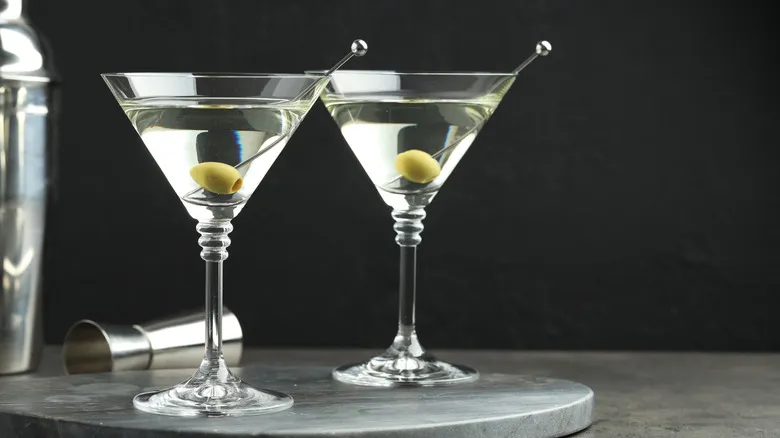
In preparing to write this article, I naturally reached out to my network of fellow drinks writers, bartenders, and cocktail enthusiasts to gather their insights on the finest vodka-based cocktails. The drink that was mentioned far more often than others was the classic martini. I had always considered it "humble," but after hearing so many accolades, it became clear that many view it as the quintessential vodka cocktail. I had merely thought of it as a simple glass of straight alcohol, whether shaken or stirred.
It turns out there is indeed a perfectly crafted vodka martini, originally referred to as the "Kangaroo Kicker." This timeless drink can be made in countless variations, from the sweet and tangy Lemon Drop to the vibrant Cosmo, a favorite from Sex and the City. There are also numerous ways to serve it — dry (with less vermouth), with a twist, with an onion (known as a Gibson), dirty, and my personal (though slightly judgmental) favorite: filthy, which involves a generous splash of olive brine. In every variation, the vodka takes center stage, making it essential to choose the best quality vodka for your cocktail.
Bloody Mary

While I’m not entirely comfortable with the idea of ordering a Bloody Mary when I’d typically opt for a vodka-cranberry (to me, Bloody Marys are strictly for breakfast and brunch), it’s clear that there are just as many fans of this drink as there are of vodka martinis. In other words, it’s a highly popular vodka-based cocktail.
The finest examples of these salad-in-a-glass concoctions go well beyond merely mixing vodka with a pre-made blend. They often feature a closely-guarded secret recipe that includes ingredients like horseradish, celery salt, Worcestershire sauce, hot sauce, pepper, and more, all mixed with tomato or vegetable juice (or, for those in Canada, the divisive Clamato—a mix of tomato, spices, and clam juice, which I prefer not to ponder too deeply), vodka, and typically a generous squeeze of lemon or lime for an invigorating twist.
Let’s not overlook the ever-expanding array of garnishes that began with a simple celery stalk and have now transformed into something almost absurd, featuring everything from shrimp and crab claws to onion rings and even mini cheeseburger sliders. If drinks were appetizers, this would be the most extravagant charcuterie board imaginable. For those who enjoy their cocktails savory and accompanied by food, the Bloody Mary is the ideal option.
Muddled Basil Martini
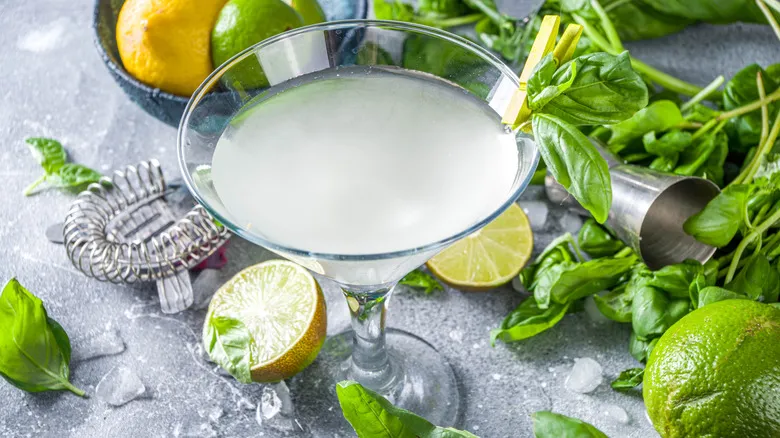
I initially believed this was a unique creation by Devin Parr, as I found myself tossing together a mix of ingredients that I thought would blend well in a cocktail shaker, hoping for a delightful outcome. However, I discovered that, while not as prevalent as some other vodka-based classics, it is indeed a legitimate cocktail, crafted in various forms at upscale bars worldwide.
Despite its elegant name, it's incredibly easy to prepare. Start by adding a handful of fresh basil leaves to a cocktail shaker, along with some simple syrup and freshly squeezed lemon or lime juice. Muddle the mixture until the basil is bruised and its aromatic oils are released. Next, add ice and vodka to the shaker and shake it up vigorously. Strain the mixture into a martini glass and enjoy the enticing aromas of this garden-fresh beverage.
If basil isn't available, mint serves as a delicious, mojito-like substitute, and the two herbs can often be used interchangeably in many recipes. Alternatively, you can combine both for a refined, herbaceous drink. Some adventurous mixologists have even elevated this cocktail by creating a sophisticated Caprese Martini, featuring homemade tomato, basil-infused vodka, olive oil, white vermouth, and a few dashes of balsamic vinegar.
White Russian
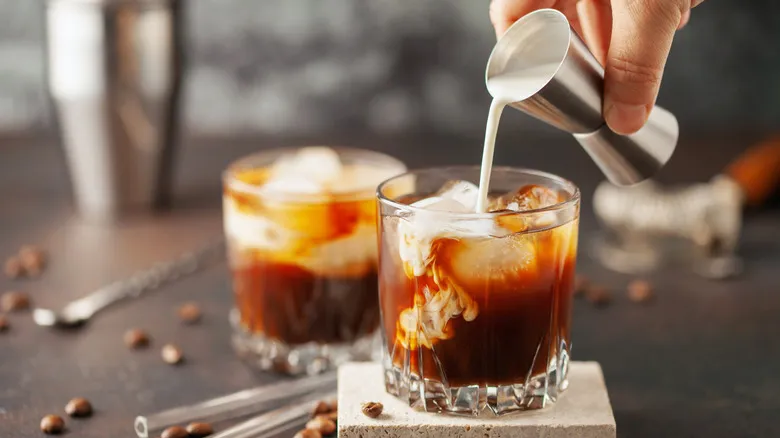
Fans of "The Big Lebowski" will undoubtedly recall Jeff Bridges' laid-back anti-hero, "The Dude," and his love for the White Russian—a cocktail that makes such frequent appearances in the film that it could almost earn its own credit. This drink is believed to have been created in Belgium during the 1940s by bartender Gustave Tops, who first mixed the Black Russian, a straightforward combination of vodka and coffee liqueur. In the 1960s, someone decided to enhance this potent beverage by adding a splash of cream, transforming the Black Russian into the White Russian.
Similar to the espresso martini, this cocktail is an excellent choice for an after-dinner drink or a decadent dessert at home. The finest versions utilize heavy cream, though half-and-half can suffice in a pinch. Experts advise against using milk, as it can lead to a watery and unsatisfying result. The visual allure of this cocktail is striking. The cream is poured on top of the vodka and coffee liqueur—Kahlúa is a popular option—allowing the snowy white cream to gracefully settle over the dark coffee, creating a mesmerizing effect. Once you've admired this beautiful presentation, be sure to stir the three ingredients together for a delightful sweet and creamy indulgence.
Caipiroska
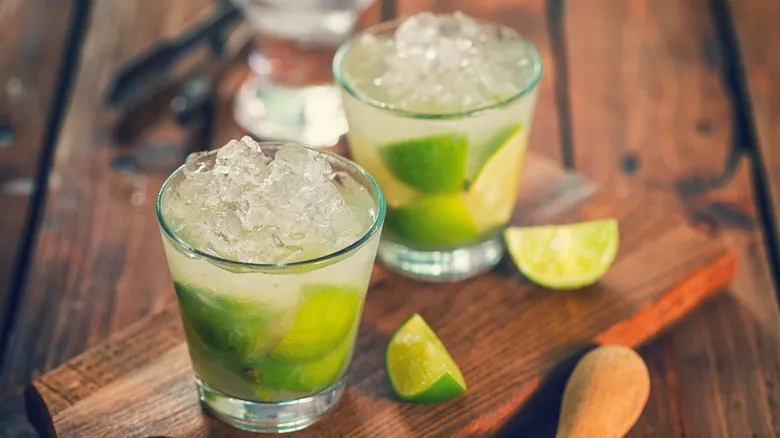
Craving a daiquiri but lacking rum on your bar cart? Whip up a Caipiroska instead! Also referred to as Caipivodka or Caipirodka, this more accessible relative of Brazil's Caipirinha — you know, the one who shows up with vodka instead of the less common cachaça — is a timeless muddled cocktail made with just a few limes, some sugar, and vodka.
Cachaça, a beloved Brazilian spirit, is a rum-like liquor distilled from fermented sugar cane juice and is the key ingredient in the Caipirinha, Brazil's national drink. With its earthy notes, cachaça imparts a unique flavor to the Caipirinha, while the Caipiroska offers a milder, lime-centric alternative. If you enjoy drinks with a bit more complexity, don’t hesitate to enhance the classic Caipiroska's simple ingredients. Mixologists often use lime, sugar, and vodka as a foundation to incorporate fresh herbs, berries, and other ripe fruits, elevating this refreshing beverage.
Honey Deuce
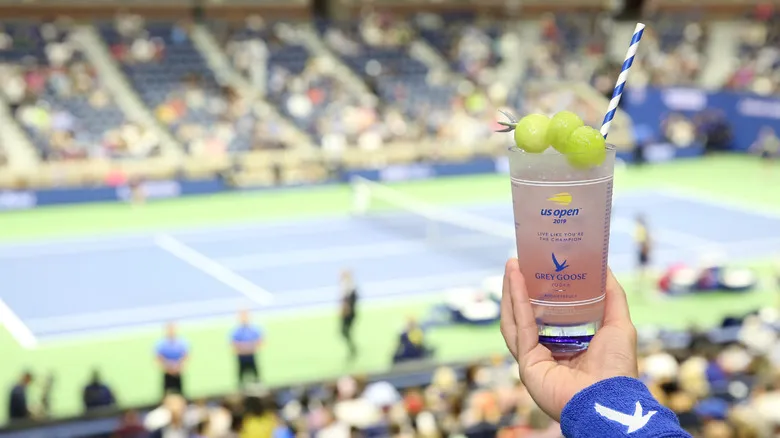
Think of the Honey Deuce as the ultimate drink for champions—the MVP of Happy Hour, if you will. It’s a total game-changer for your taste buds. Jokes aside, this incredibly refreshing and playful cocktail was created by Grey Goose specifically for the U.S. Open, where it has earned its title as the official drink. With its fruity and tangy flavors, it’s a delightful choice whether you’re enjoying it courtside or from the comfort of your couch.
Making a Honey Deuce is much simpler than nailing a perfect tennis serve (I promise, that’s the last pun). Start by filling a highball glass with ice, then add one and a quarter ounces of vodka (according to the official Grey Goose recipe). Next, pour in fresh lemonade until it’s just below the rim, and finish it off with about half an ounce of raspberry liqueur. For the finishing touch, garnish with a skewer of cute frozen honeydew melon balls, arranged to mimic tennis balls. The experts suggest freezing the melon in advance and using a melon baller for the ideal shape. Want to elevate your drink? Try this enhanced Honey Deuce recipe that includes honeydew purée, giving the cocktail a concentrated melon flavor that’s a true grand slam in a glass.
Appletini

In the 1990s, the Appletini—short for Apple Martini—became nearly as iconic as Carrie Bradshaw's Cosmopolitan, but with a flair that was ten times more extravagant. It made its debut at the now-closed Lola's bar in West Hollywood, captivating drinkers with its vibrant green hue reminiscent of Jolly Ranchers, thanks to a delightful mix of vodka, tart green apple schnapps, and simple syrup.
The Appletini occupies a somewhat divisive spot in cocktail culture, provoking mixed feelings even in retrospect. It has often been depicted in popular media as a reflection of the drinker—perhaps seen as a bit high-maintenance, somewhat unsophisticated, or just a touch... over the top. Despite its rapid rise to fame, the drink eventually faded as the craft cocktail movement gained momentum, becoming viewed as overly sweet, artificial, and neon, overshadowed by artisanal bitters, homemade syrups, and premium Luxardo cherries.
While our tastes may change, they remain open-minded and forgiving, paving the way for a cocktail renaissance unlike any other. The contemporary Appletini is now sleek, subtle, and sophisticated, shedding its radioactive appearance. Nostalgic bartenders have reinvented the classic with fresh-pressed apple juice, dry apple liqueurs, top-shelf vodkas, fresh lemon or lime juice, and occasionally a splash of Calvados, the signature apple brandy from Normandy. The modern Apple Martini is crisp, juicy, and a testament to the idea that everyone has a redemption story waiting to be told.
Gypsy Queen
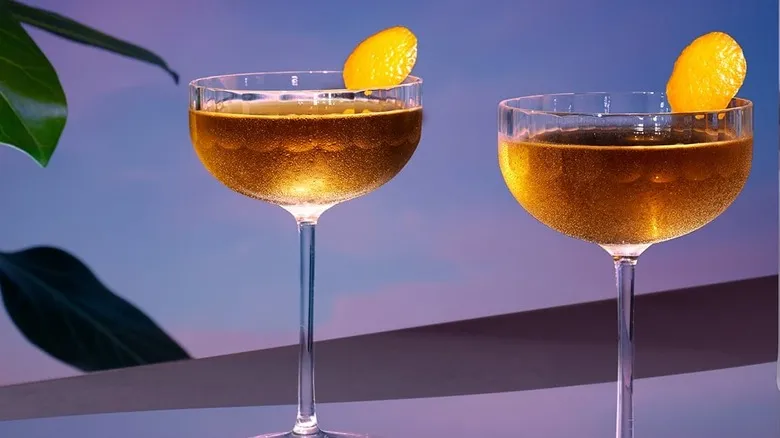
You know those bottles of spirits that often adorn the top shelf of bars, leaving you curious about their purpose? Enter: The Gypsy Queen, a cocktail that is as smooth and enigmatic as its name suggests. According to experts, this refined drink is one of the earliest vodka-based cocktails in the United States, with a mention found by drinks historian David Wondrich in a booklet from New York's renowned establishment, the Russian Tea Room, dating back to the late 1930s. The cocktail exudes a distinctly vintage charm, reminiscent of lounging in a velvet chair at a dimly lit bar, with Ella Fitzgerald's velvety voice emanating from a gramophone.
Crafting this nostalgic drink is simpler than it may seem. It begins with Bénédictine, a unique liqueur crafted from an impressive 27 herbs and spices, giving it its signature copper hue. When combined with vodka and a few dashes of bitters, the result is a contemplative cocktail with seemingly infinite layers of flavor and aroma. With its modern profile, the Gypsy Queen manages to transcend time, feeling both classic and timeless in every sip. Contemporary mixologists captivated by this distinctive drink have put their own spin on it, incorporating elements like citrus, herbal garnishes, and even absinthe for an added punch. Regardless, the intriguing Gypsy Queen will leave you pondering — perhaps about who will be buying the next round — as you gaze into the depths of your glass.
Recommended
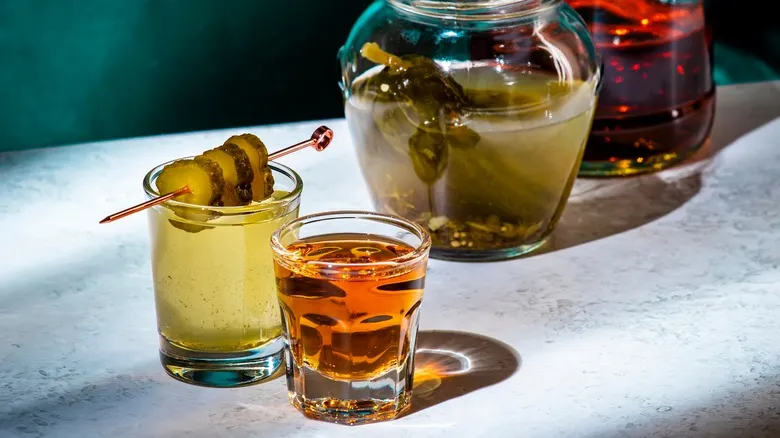
The Best Cocktail To Make With Leftover Pickle Juice
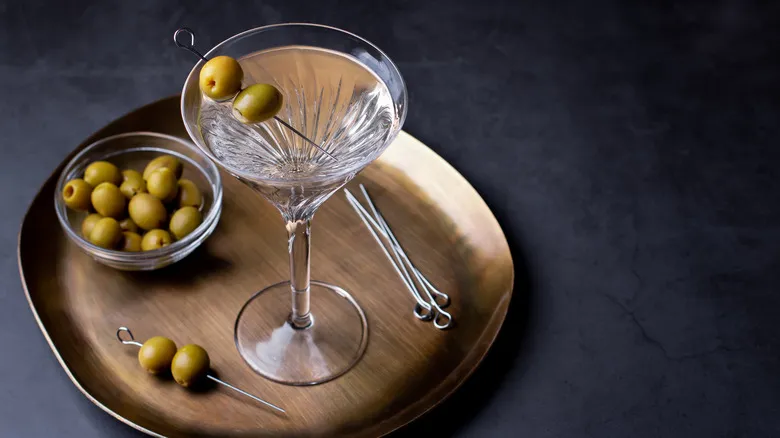
The Best Appetizers To Pair With A Dirty Martini
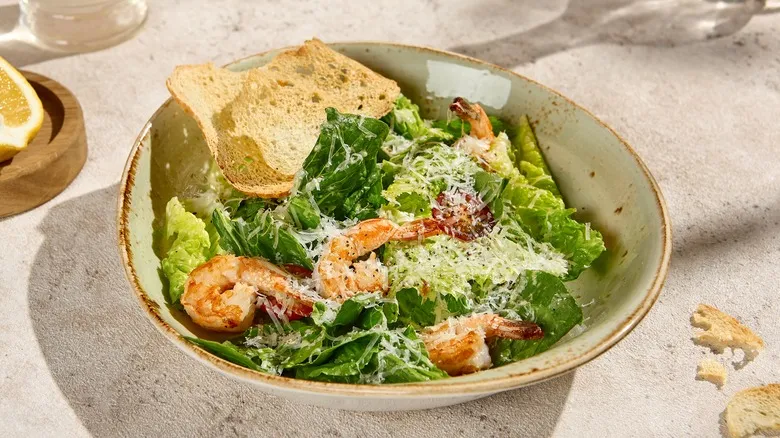
Is A Caesar Salad, Fries, And A Martini Actually A Winning Combination?
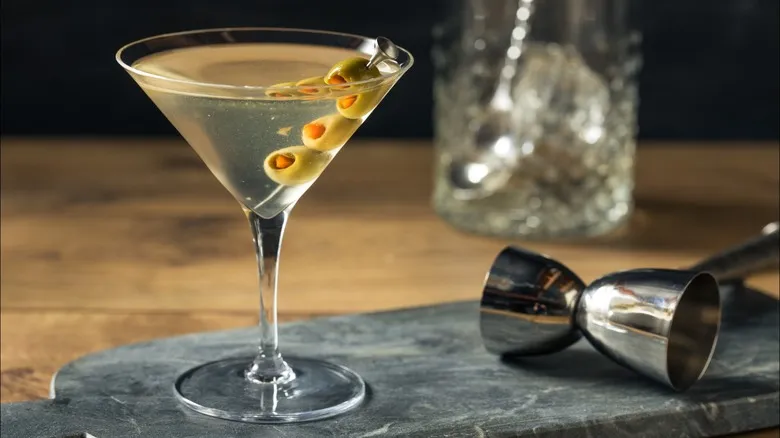
The Expert-Approved Dishes You Should Order With A Dirty Martini
Next up

